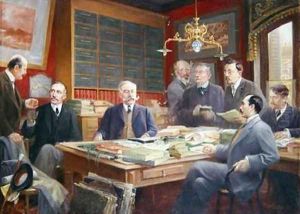Louis Paul de Laubadere Paintings
Louis Paul de Laubadère was a notable French artist, whose career spanned several decades of the 20th and early 21st centuries. Born in 1928, in the picturesque region of France, Laubadère's early life was steeped in the rich cultural heritage of his homeland, which profoundly influenced his artistic journey. From a young age, he showed an exceptional talent for drawing and painting, leading him to pursue formal studies in art. His education at prestigious art schools in France laid the foundation for his distinctive style, which would later become celebrated in art circles.
Laubadère's body of work is characterized by its diversity, ranging from traditional landscapes and portraits to more abstract compositions. His mastery of color and form, along with a deep sensitivity to the natural world and human emotion, resonated with audiences and critics alike. Throughout the 1950s and 1960s, his reputation grew, culminating in several successful solo exhibitions across Europe. Laubadère was also known for his involvement in the post-war art movements that sought to redefine French art in the context of modernity.
Despite achieving considerable success, Laubadère remained deeply committed to exploring new artistic techniques and expressions. In the 1970s and 1980s, his work began to reflect an increasing interest in abstraction, though he never completely abandoned the representational roots of his early career. This period was marked by experimentation with different materials and methods, including printmaking and sculpture, which further enriched his oeuvre.
Louis Paul de Laubadère continued to work and exhibit well into the late stages of his life, maintaining a vibrant presence in the art world until his death in 2021. His legacy is preserved in the collections of several major museums in France and internationally, as well as in the hearts of those who were moved by his work. Laubadère's contribution to the arts extends beyond his paintings; he was a mentor to younger artists and an active participant in cultural debates, advocating for the importance of art in society. His passing marked the end of an era, but his artistic vision continues to inspire new generations of artists and art lovers around the globe.
